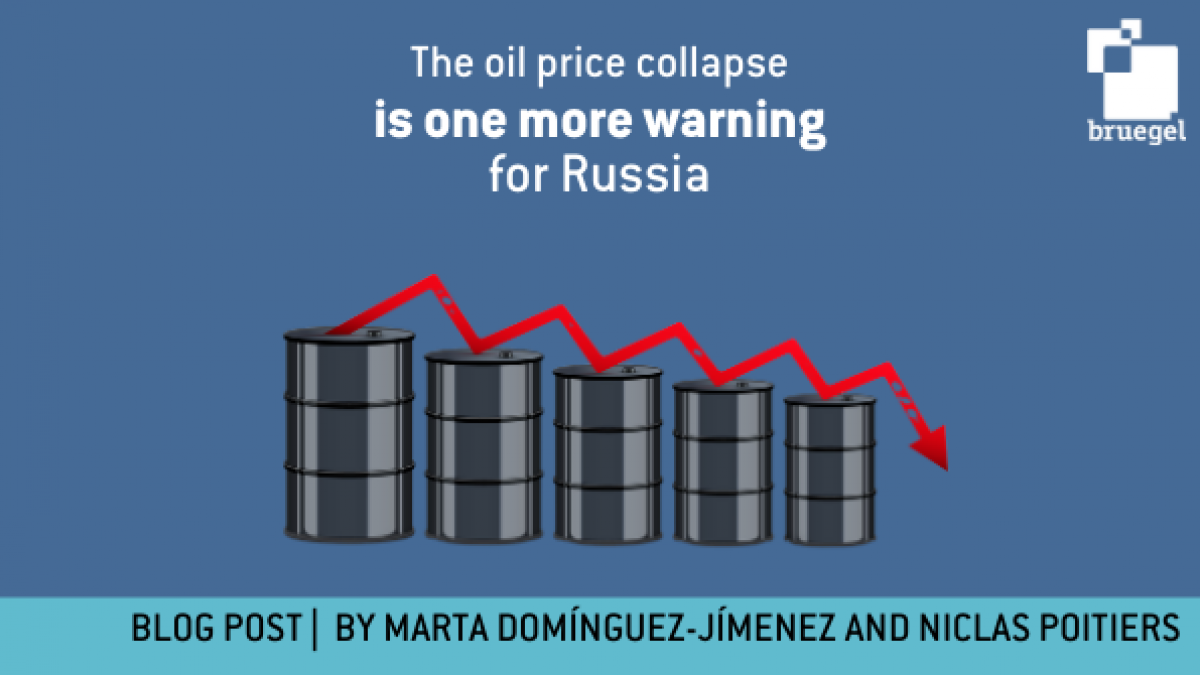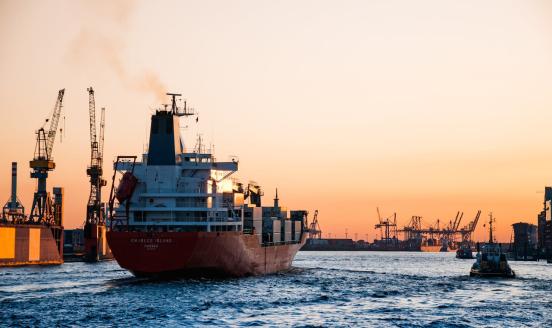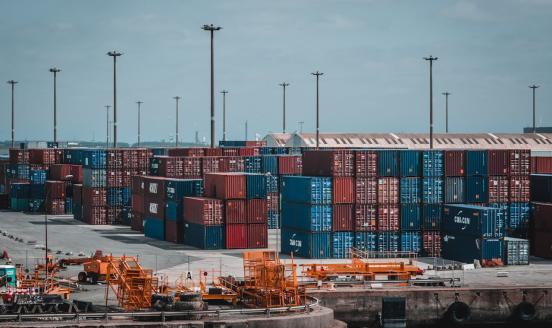COVID-19 and broken Collusion: the oil price collapse is one more warning for Russia
In the midst of the COVID-19 epidemic, the sharp collapse in the oil price has received little attention. Brent fell by 30% on 9 March, the largest fa

On 19 March, Brent opened at $27 a barrel, WTI (West Texas intermediate) was at $22. This is shocking considering they were both above $50 just two weeks previously and were around $120 in 2014, signifying a fall of roughly 75% since then. The latest fall has surprised many market analysts and occurred abruptly after Russia walked away from OPEC+ negotiations in early March. The causes of the fall are twofold.
Firstly, the COVID-19 epidemic has put great strain on demand in international markets. China remains the world’s primary importer of crude, and was the source of 80% of the growth in global oil demand in 2019. In the past weeks, production and consumption in China has fallen substantially, with a major chunk of China’s manufacturing industry grinding to a halt and large parts of the country under lockdown (a pattern currently replicating elsewhere) and Chinese PMIs registered their lowest values ever. Meanwhile, the fear of continued spread of the coronavirus in Europe and the US has put further downward pressure on oil markets. Most EU countries have introduced wide-ranging measures of ‘social distancing’, directly affecting oil demand through reduced travel. The airline industry has slashed numbers of flights (British Airways plans to cut capacity by 75%, Ryanair by 80%), greatly reducing jet fuel demand. Many economists believe a major recession is inevitable. The International Energy Agency on 9 March estimated that global oil demand will decrease by 2.5 million barrels per day in Q2 of 2020 (roughly 2.5% of global demand). Other estimates foresee a reduction as large as 10 million barrels per day, which would equal to 10% of global demand.
The price collapse has been massively reinforced by supply factors. When Russia walked out of the 7-8 March OPEC+ meeting, convened to discuss supply restrictions to ensure price stability, Saudi Arabia retaliated by ramping up production and starting a price war. The breakdown of negotiations ultimately resulted in the elimination of all previous restrictions. The market was flooded with oil – Saudi Arabia alone pledged to increase oil production by 2.6 million barrels per day (a 25% increase) – and reacted accordingly. Beyond its unwillingness to make concessions, Russia’s actions might have been, at least partially, motivated by a desire to push out of the market American shale producers, which have much higher marginal costs of production which might be unsustainable under current prices (though they could be bailed out by the US government). Pressures on demand are putting oil producers in increasingly complicated situations. As potential profits fall, collusion is becoming harder to sustain. It is unclear whether Russia expected Saudi Arabia’s retaliation and was willing to engage in this price war, but even if Russia is able to score a geopolitical win, its economy will pay the price.
Russia’s weakness
For large oil countries that depend on selling oil, there are two important benchmarks: the cost of production per barrel and the minimum price per barrel relied on for fiscal revenue. While Saudi Arabia has the lowest cost of extraction in the world (as low as $3 per barrel), its fiscal reliance on oil is substantial: a price of $80 or above is required to keep a balanced budget. Russia has a much higher cost of extraction (around $20 per barrel) yet its budget assumes a price of $40, providing some initial room for manoeuvre. However, the lack of immediate fiscal necessity does not reduce the Russian reliance on oil; the economic costs will be substantial regardless of the Russian government’s willingness to incur them.
Oil is Russia’s primary export (around half of all exports), accounts for 40% of the federal government’s revenues, and is the focus of most foreign investment (see our Policy Contribution for an analysis of this in the context of Russia’s relationship with the EU). Russia’s rent economy relies on these revenues, which are deeply affected by oil price swings. The oil boom and the accompanying resource curse during the 2000s led to the demise of Russia’s non-resource industry, which had already been weakened by the economic collapse of the 1990s and has not recovered. The lack of property rights protection and the international isolation caused by Russia’s internal and foreign policy has worsened the prospects for Russia’s non-resource industry.
As weak as 2014?
It is hardly the first oil price collapse in recent years, and lessons can be learnt from a similar episode in 2014, when Brent lost over half of its value in a matter of weeks: from $112 to $53. This collapse was caused by both supply and demand factors, although market analysts generally agree that the growth in supply played a predominant role. Furthermore, expectations about the future balance of supply and demand played a major role. This put substantial pressure on Russia’s currency, heightened by the central bank taking the final step in its change of monetary regime: the exchange rate had been pegged, but shortly before the collapse, the central bank entered an inflation-targeting regime. There was doubt about the ability of the central bank to control the collapse of the ruble and prevent capital flight. The ruble depreciated by 50% against the euro during 2014, and the central bank had to deplete its foreign exchange reserves by over 30% in order to stabilise the currency.
This happened at the same time as the introduction of Western sanctions limiting Russian access to international financial markets. While the collapse of the ruble probably had the biggest effect, the combination of both caused a banking crisis and pushed the Russian economy into a recession. Notably, Russian GDP measured in US$ has not grown over the last decade.
While the current oil price collapse is the biggest daily in recent memory, it is yet to be seen if it will have the same effects as in 2014. The Russian government has made huge efforts to shield its budget from the effect of currency fluctuations, by exerting fiscal discipline and by reinforcing the national wealth fund, which invests in foreign reserves oil revenues from prices above $40. Furthermore, the floating currency cushions some of the effect of the change in oil prices. However, the Russian government has not managed to diversify its economy away from fossil fuels, and its international isolation in terms of trade has not decreased. It was a notable aim of the government to jumpstart the stagnating economy through fiscal expenditure programmes called ‘National Projects’, partly financed by the national wealth fund. It is unlikely these projects are viable in world of sub-$30 oil prices.
Outlook
The COVID-19 pandemic, of as-yet uncertain magnitude, will undoubtably also affect Russia and its economy. Russia will not be able to avoid contagion in the medical and economic senses. All this adds to the structural challenges Russia is facingfaces already. The Russian economy population is ageing, and the EU, its premier market for its main export of fossil fuels, has pledged to decarbonise.
This is perhaps what should worry the Kremlin most. The oil price could recover in the coming months, as demand rebounds, and fiscal considerations might bring both Saudi Arabia and Russia back to the negotiating table. However, it is likely that any recovery will be short-lived. Bouts of collapsing demand are bound to become more frequent as the world becomes progressively greener. In its sustainability scenario, which takes climate goals seriously, the IEA forecasts that global oil demand will fall by 30% up to 2040, and European demand – Russia’s primary market – will fall by 60%. While withholding reserves and lower degrees of investment might temporarily halt the price decline, periods of recovery will be short and underwhelming. Decreasing demand will make collusion between the oil-producing countries more difficult. COVID-19 foreshadows what might happen with a permanent fall in demand, for which Russia has done little to prepare. Regardless of whether the low oil price persists or not, it is another example of Russian foreign policy impeding its economic development. This time it is operating in a period of major global macroeconomic uncertainty. This will likely only accelerate the decline of Russia on the world stage.



